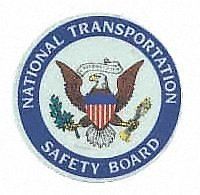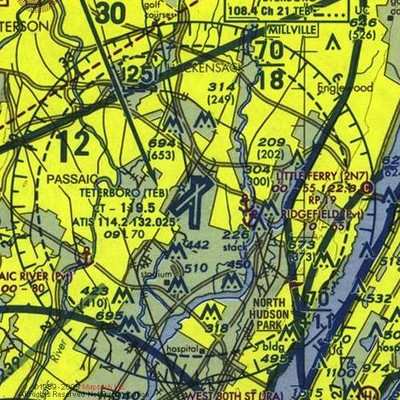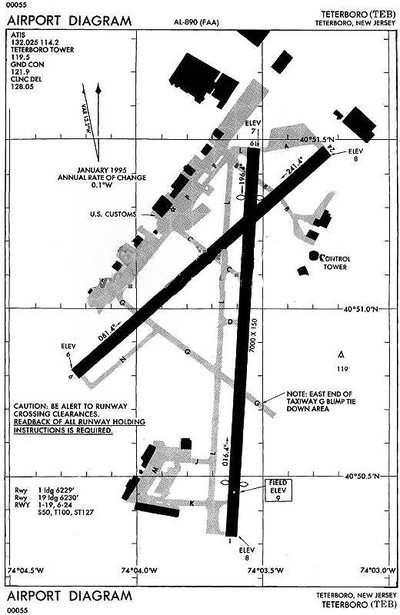Operator Also Failed To Maintain Control Over Part 135 Ops
In its final report adopted Tuesday, the National Transportation
Safety Board determined the probable cause of a February 2005
corporate jet accident at New Jersey's Teterboro Airport, was the
flight crew's failure to ensure the airplane was loaded within
weight and balance limits and their attempt to take off with the
center of gravity well forward of the forward takeoff limit, which
prevented the airplane from rotating at the intended rotation
speed.

The investigation revealed that neither pilot used the available
weight and balance information appropriately to determine the
airplane's weight and balance characteristics for the take off.
"This accident clearly shows what can happen when crucial
operating steps are not adhered to," said NTSB Chairman Mark
Rosenker. "When it comes to transportation safety there are no
shortcuts and it is important that operators and flight crews
ensure that proper procedures are followed at all times."
 As Aero-News reported, On
February 2, 2005, a Bombardier Challenger CL-600-1A11, during
takeoff, ran off the departure end of runway 6 at Teterboro
Airport, Teterboro, New Jersey; through an airport perimeter fence;
across a six-lane highway (where it struck a vehicle); and into a
parking lot before impacting a building. The two pilots were
seriously injured, as were two occupants in the vehicle. The cabin
aide, eight passengers, and one person in the building received
minor injuries.
As Aero-News reported, On
February 2, 2005, a Bombardier Challenger CL-600-1A11, during
takeoff, ran off the departure end of runway 6 at Teterboro
Airport, Teterboro, New Jersey; through an airport perimeter fence;
across a six-lane highway (where it struck a vehicle); and into a
parking lot before impacting a building. The two pilots were
seriously injured, as were two occupants in the vehicle. The cabin
aide, eight passengers, and one person in the building received
minor injuries.
The Safety Board found that contributing to the accident were
Platinum Jet Management's (PJM) conduct of charter flights without
proper Federal Aviation Administration (FAA) certification and its
failure to ensure that all for-hire flights were conducted in
accordance with Part 135 requirements. According to federal
regulations, an operator must hold an appropriate air carrier
certificate to operate as an air carrier and to advertise its
services to the public for compensation or hire. Although PJM did
not hold an appropriate certificate, the company advertised its
charter services and represented itself to the public as an
authorized charter operator, the Board found.
Another contributing factor was Darby Aviation's (operating
certificate holder) failure to maintain operational control over
Part 135 flights being conducted under its certificate by PJM,
which resulted in an environment conducive to the development of
systemic patterns of flight crew performance deficiencies like
those observed in this accident. An example of this was the Board's
findings that PJM pilots routinely improperly modified the
airplane's weight and balance forms, using a variety of invalid
airplane empty weights to ensure that the form indicated that the
airplane was operating within its limitations.
Also contributing to the cause was the failure of the
Birmingham, Alabama, FAA Flight Standards District Office to
provide adequate surveillance and oversight of operations conducted
under Darby's Part 135 certificate, the report states. The Board
noted that although FAA personnel reviewed Darby's record, they did
not ensure that PJM's airplanes were operated and maintained in
accordance with Darby's company requirements or that charter trips
flown by PJM were controlled by Darby.

Finally, contributing to the accident was the FAA's tacit
approval of arrangements such as that between Darby and PJM. The
Board stated in its findings that without clear and specific
guidance on agreements between certificate holders and other
entities that provide airplanes and/or flight crews for charter
flights, unauthorized entities could still be performing most, if
not all, of the functions of an on-demand charter operator without
controls, oversight, and demonstrations of fitness imposed by a
Part 135 certificate.

As a result of the investigation of this accident, the NTSB's
recommendations to the FAA includes:
- Reviewing all charter management, lease, and other agreements
between Part 135 certificate holders and other entities to identify
those agreements that permit and/or enable a loss of operational
control by the certificate holder and require revisions of any such
arrangements
- Requiring all Part 135 certificate holders to ensure that
seatbelts at all seat positions are visible and accessible to
passengers before each flight
- Requiring that any cabin personnel on board Part 135 flights
who could be perceived by passengers as equivalent to a qualified
flight attendant receive basic FAA-approved safety training in a
least the following areas (incomplete safety briefing was giving on
accident flight): preflight briefing and safety checks; emergency
exit operation; and emergency equipment usage. This training should
be documented and recorded by the Part 135 certificate holder.
 Aero-News: Quote of the Day (04.28.25)
Aero-News: Quote of the Day (04.28.25) ANN's Daily Aero-Term (04.28.25): Decision Altitude (DA)
ANN's Daily Aero-Term (04.28.25): Decision Altitude (DA) ANN's Daily Aero-Linx (04.28.25)
ANN's Daily Aero-Linx (04.28.25) Airborne-Flight Training 04.24.25: GA Refocused, Seminole/Epic, WestJet v TFWP
Airborne-Flight Training 04.24.25: GA Refocused, Seminole/Epic, WestJet v TFWP Aero-News: Quote of the Day (04.29.25)
Aero-News: Quote of the Day (04.29.25)






